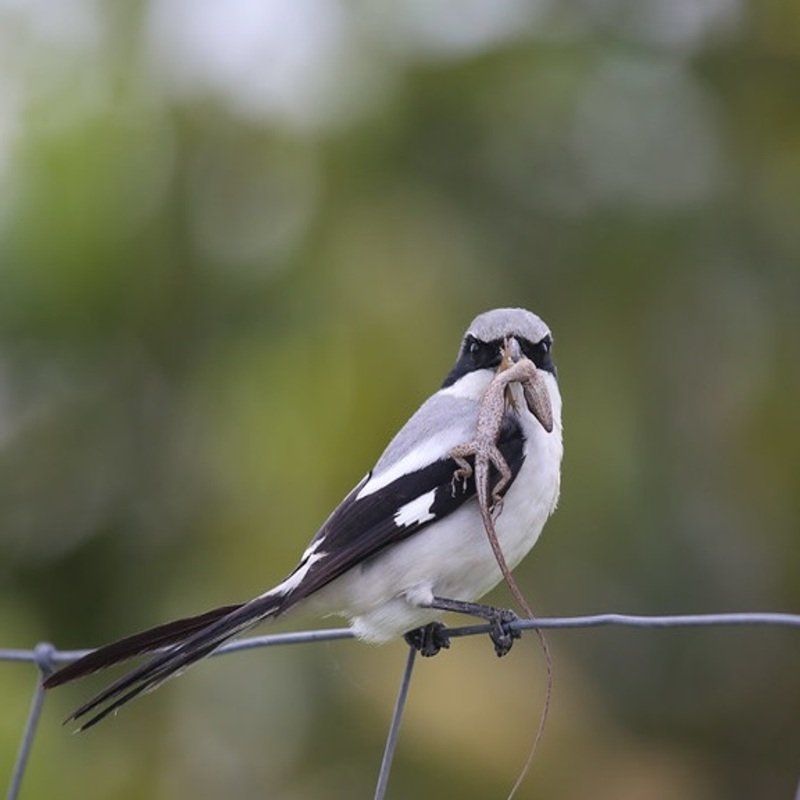The northern shrike, Lanius borealis, is a big songbird species belonging to the shrike family Laniidae that is endemic to North America and Siberia. It is the largest of the shrike family’s members. It had previously been considered a subspecies of the great gray shrike, but in 2017 it was recognized as a separate species. There are six subspecies that have been identified.
Quick Overview: Lanius Borealis – Northern Shrike
Body size: Around 9-10 in (23-25 cm) and a weight of 65 g (2.3 oz)
Main colors: Gray, Black, White
Range: Northern United States
Migratory Bird: Yes
Best time of the year to see in the U.S.: January, February, December
Conservation Status: Least Concern
Northern shrike Description
Smaller in size than the northern shrike, with darker gray plumage with white underparts and a bigger black face mask that completely covers the eyes, the loggerhead shrike may be differentiated from the latter. It also has a shorter bill with a less pronounced hook than the common crow. Their phone calls are quite similar.

Size
These birds have a length of 9-10 in (23-25 cm) and a weight of 65 g (2.3 oz). Their wings could range from 13.5-16.5 in (34-42 cm).
Feeding
Northern shrikes are commonly seen perched on tall poles and trees, scanning their surroundings for food. They feed on arthropods such as spiders, beetles, lizards, bugs, and grasshoppers, as well as small vertebrates like mice and rats.
Habitat
Breeds in the far north in spruce forests that are partly open or dispersed, as well as willow and alder scrub near streams or on the margins of tundra. Winters in comparable semi-open habitats, occasionally in wide grassland with a few high perches, but appears to prefer some brushy areas nearby in the spring and summer.
Behavior
Feeds by spotting prey and swooping out to catch it. Prey is caught in the bill or foot, with bigger vertebrates being killed by a neck bite. Prey is sometimes impaled on a barbed wire fence or thorn, either for later consumption or to hold prey while eating it.
Lanius borealis Scientific Classification
- Kingdom: Animalia
- Phylum: Chordata
- Subphylum: Chelicerata
- Class: Aves
- Order: Passeriformes
- Family: Laniidae
- Genus: Lanius
- Species: Lanius borealis
Subspecies
There are six subspecies that have been identified.
Best time of the year to see
The best time to see these birds in the United States is during the winter season (December to February).
Distribution of the Northern shrike in the USA
Many, but not all, Northern Shrikes breed in North America, where they may be found from Labrador and Quebec to western Alaska. During the late fall and early winter, they travel south to southern Canada and the northern United States, where they spend the winter.
The Northern shrike can be found in the following states in the United States – Alaska, California, Colorado, Connecticut, Delaware, Hawaii, Idaho, Illinois, Indiana, Iowa, Kansas, Kentucky, Maine, Maryland, Massachusetts, Michigan, Minnesota, Missouri, Montana, Nebraska, Nevada, New Hampshire, New Jersey, New York, North Dakota, Ohio, Oregon, Pennsylvania, Rhode Island, South Dakota, Utah, Vermont, Washington, Wisconsin and Wyoming.

